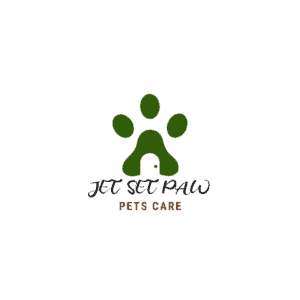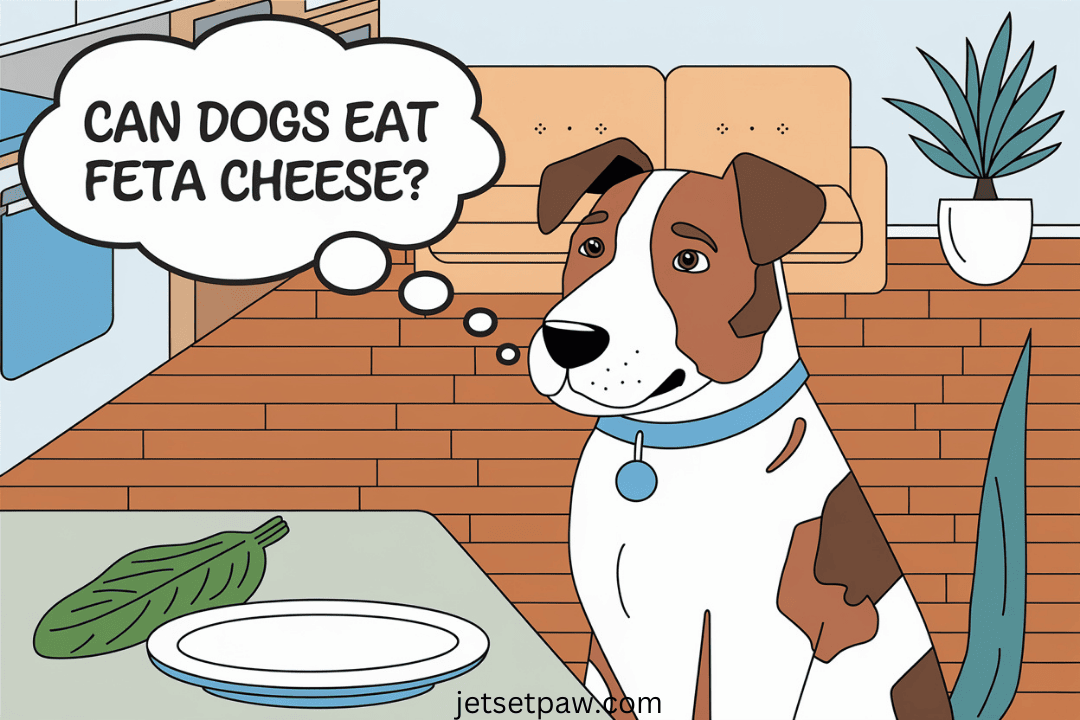Feta cheese is a popular dairy product that many people enjoy. It’s a white, crumbly cheese from Greece that is often used in salads, sandwiches, and other dishes.
This tangy cheese is made from sheep’s milk or a mix of sheep’s and goat’s milk, giving it a unique flavor many humans love.
We dog owners always want to ensure our furry friends are happy and healthy. Part of being a responsible pet owner is knowing what foods are safe for our dogs.
While sharing our favorite snacks with our canine companions is tempting, not all human foods suit dogs. Some foods can even be harmful or toxic to them.
That’s why it’s crucial to understand which foods are safe for dogs and which ones should be avoided. By learning about what dogs can and can’t eat, we can keep them healthy and prevent potential health problems.
So Can Dogs Eat Feta Cheese?
The quick answer to whether dogs can eat feta cheese is: yes, they can eat small amounts, but it’s not recommended as a regular treat.
While a tiny bit of feta cheese won’t harm most dogs, it’s not the best food choice for them. For several reasons, feta cheese isn’t ideal for our canine friends.
First, feta cheese is high in fat and salt, which aren’t suitable for dogs in large amounts. Too much fat can lead to weight gain and other health issues, while too much salt can harm their hearts and kidneys.
Second, many dogs are lactose intolerant and can’t digest dairy products well. This can cause stomach upset, gas, or diarrhea. Lastly, some feta cheeses might contain herbs or spices that could harm dogs.
Because of these reasons, it’s better to choose other, safer treats for your furry friend instead of feta cheese.
Nutritional Content of Feta Cheese
Feta cheese has a unique nutritional profile, making it tasty for humans but not so great for dogs. Let’s break down the main components that can affect our furry friends:
1) High-fat content
Feta cheese is known for its high-fat content. While fat isn’t always bad, too much can be a problem for dogs. Just one ounce of feta cheese contains about 6 grams of fat.
This might not seem like a lot to us, but it’s quite a bit for a dog, especially a smaller one. Too much fat in a dog’s diet can lead to weight gain and even pancreatitis, a painful inflammation of the pancreas.
2) High sodium content
Another concern with feta cheese is its high sodium content. Feta is typically very salty, with one ounce containing about 260 milligrams of sodium.
Dogs don’t need nearly as much salt in their diets as humans do, but too much sodium can make dogs very thirsty and might lead to issues with their hearts or kidneys if they eat it often.
3) Lactose presence
Lastly, feta cheese contains lactose, the sugar in milk. Many dogs are lactose intolerant, meaning their bodies can’t digest this sugar properly.
When lactose-intolerant dogs eat dairy products like feta cheese, they might experience stomach upset, gas, or diarrhea. Even dogs who aren’t lactose intolerant might have trouble with the amount of lactose in cheese.
Potential Risks of Feeding Feta Cheese to Dogs
Feeding feta cheese to dogs can lead to several health issues. Understanding these risks is important to keeping our furry friends healthy and happy.
Digestive issues are a common problem when dogs eat feta cheese. Many dogs might experience stomach upset, including nausea, vomiting, or diarrhea.
This is often because of the cheese’s high-fat content and lactose, which can be hard for dogs to digest properly.
Weight gain is another concern when dogs regularly eat fatty foods like feta cheese. Like humans, dogs can become overweight if they eat too many high-calorie foods. Extra weight can lead to other health problems, such as joint pain, heart issues, and diabetes.
The high salt content in feta cheese can cause increased thirst and urination in dogs. If dogs eat too much salty food, they might drink more water than usual and need to go to the bathroom more often.
In some cases, this can lead to dehydration if the dog doesn’t drink enough water to balance the salt intake.
Lastly, many dogs are lactose intolerant, so their bodies can’t break down the lactose in dairy products like feta cheese.
When lactose-intolerant dogs eat cheese, they might get gassy, bloated, or have diarrhea. Even dogs who aren’t lactose intolerant might have trouble with the amount of lactose in cheese.
Safer Cheese Options for Dogs
If you want to give your dog a cheesy treat, there are safer options than feta cheese. Let’s explore better choices that are less likely to cause health problems for your furry friend.
Low-fat, low-sodium cheeses
Low-fat, low-sodium cheeses are generally safer for dogs in small amounts. Some good options include mozzarella and fresh goat cheese.
These cheeses have less fat and salt than feta, making them healthier for dogs. However, it’s important to remember that even these cheeses should only be given as an occasional treat, not a regular part of your dog’s diet.
Always offer cheese in small pieces to avoid choking hazards.
Cottage cheese is a better alternative
Cottage cheese is often considered one of the best cheese options for dogs. It’s lower in fat and sodium than other cheeses, including feta.
Cottage cheese also has less lactose than other dairy products, making it less likely to upset your dog’s stomach. Plus, it’s a good source of protein and calcium.
When choosing cottage cheese for your dog, look for plain, low-fat varieties without added salt or flavorings. As with any treat, moderate cottage cheese and introduce it slowly to ensure your dog tolerates it well.
When to Consult a Veterinarian
Regarding your dog’s health and diet, it’s always better to be safe than sorry. Knowing when to seek professional help is crucial for your pet’s well-being, especially when introducing new foods like cheese.
Signs of cheese intolerance in dogs:
- Vomiting
- Diarrhea
- Excessive gas
- Abdominal pain or discomfort
- Lethargy
- Loss of appetite
- Excessive scratching or skin irritation (in some cases)
If you notice any of these symptoms after your dog has eaten cheese, it’s important to stop giving it immediately and monitor its condition. If symptoms persist or worsen, it’s time to consult your veterinarian.
The importance of professional advice for your dog’s diet cannot be overstated. Every dog is unique, with individual nutritional needs based on factors such as:
- Age
- Breed
- Size
- Health conditions
- Activity level
A veterinarian can provide personalized guidance on the following:
- Whether cheese or other human foods are appropriate for your dog
- How much cheese (if any) is safe for your dog to consume
- Alternative treats that might be better suited for your dog’s needs
- Any potential interactions between cheese and your dog’s current diet or medications
Remember, while sharing our favorite foods with our furry friends is tempting, their digestive systems are different from ours. What’s tasty and harmless for us might not be the same for them.
Always consult your vet before significantly changing your dog’s diet or introducing new foods. They can help ensure your dog stays healthy and happy while enjoying the occasional treat.
Conclusion
Dogs can eat small amounts of feta cheese without immediate harm, but it’s not a good idea to give it to them regularly. Feta cheese has a lot of fat, salt, and lactose, which can cause dog problems.
The high salt can make dogs very thirsty and might lead to dehydration. Many dogs can’t digest lactose well, which can upset their stomachs. Eating feta cheese often can also cause dogs to gain too much weight.
If you want to give your dog cheese, it’s best to choose safer options and give them only a little bit as a special treat. Low-fat, low-salt cheeses like mozzarella or fresh goat cheese are better choices than feta.
Cottage cheese is often considered one of the safest cheeses for dogs because it has less fat and lactose. But even these should only be given in small amounts.
The best treats for dogs are ones made specifically for them. These treats are designed to be safe and healthy for dogs to eat.
Ask your vet if you’re unsure what treats are best for your dog. They can give you advice based on your dog’s specific needs.
Remember, every dog is different. What’s okay for one dog might not be suitable for another. Always introduce new foods slowly and watch for any bad reactions. Your dog’s health is essential, so it’s better to be safe than sorry about their diet.

